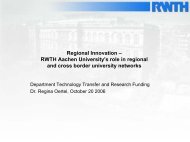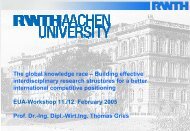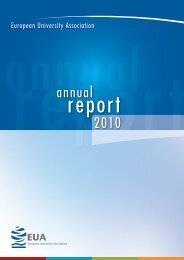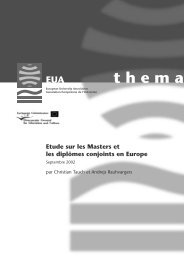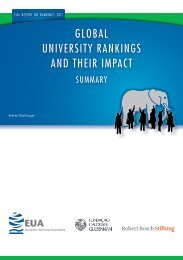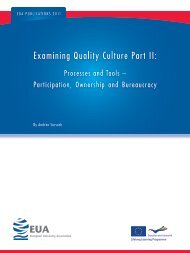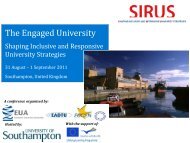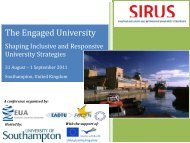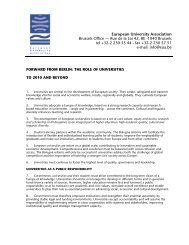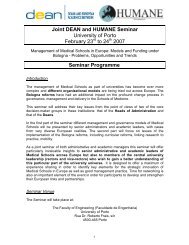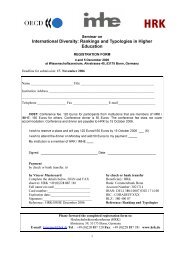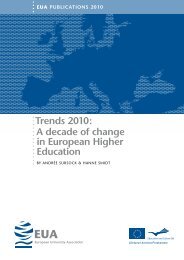Beiträge zur Hochschulforschung - European University Association
Beiträge zur Hochschulforschung - European University Association
Beiträge zur Hochschulforschung - European University Association
You also want an ePaper? Increase the reach of your titles
YUMPU automatically turns print PDFs into web optimized ePapers that Google loves.
4 Quality control as a condition for funding HEI<br />
Experiences in the Netherlands<br />
Universities and external funders have agreed on a uniform protocol for research as-<br />
sessment. The aim is to improve research quality based on external peer review, and<br />
accountability to the board of the research organisation and to the funding agencies.<br />
Systems of quality assurance are applied for education and research separately.<br />
■ For research activities, universities make use of a Standard Evaluation Protocol<br />
(SEP). On the basis of (external) peer-review, connected institutions judge the<br />
quality of their output under the supervision of the Royal Academy of Arts and<br />
Sciences KNAW. This is done every six years.<br />
■ For educational activities, Dutch and Flemish universities share a common ac-<br />
creditation institute, NVAO, which role is to guarantee the quality of the HEI. This<br />
accreditation is important, since it is seen as a condition for the right to get (public)<br />
funding. This is done every six years.<br />
4.1 Guaranteeing quality of research<br />
The Standard Evaluation Protocol (SEP) was developed to guarantee research quality<br />
in the Netherlands. The SEP for 2009-2015 aims at two objectives with regard to the<br />
evaluation of research (including doctoral training) and research management:<br />
■ Improvement of research quality based on an external peer review, including sci-<br />
entific and societal relevance of research, research policy and research management;<br />
■ Accountability to the board of the research organisation, and towards funding agen-<br />
cies, government and society at large.<br />
The rhythm of the SEP consists of a self-evaluation and an external review, including<br />
a site visit once every six years, and an internal mid-term review in between two<br />
external reviews. In the SEP, guidelines regarding assessment criteria, minimum in-<br />
formation requirements and the procedure of the external review are formulated.<br />
After the site visit, the evaluation committee will report its findings to the board of the<br />
research organisation. The board will publish the report after internal discussions with<br />
the assessed research unit and will make public its position regarding the evaluation<br />
outcomes. The evaluation report and the position of the board together constitute the<br />
results of the evaluation.<br />
External evaluations are of great value to the institute and its researchers, since inter-<br />
national experts in the field formulate recommendations regarding the research includ-<br />
<strong>Beiträge</strong> <strong>zur</strong> <strong>Hochschulforschung</strong>, 33. Jahrgang, 2/2011 83



